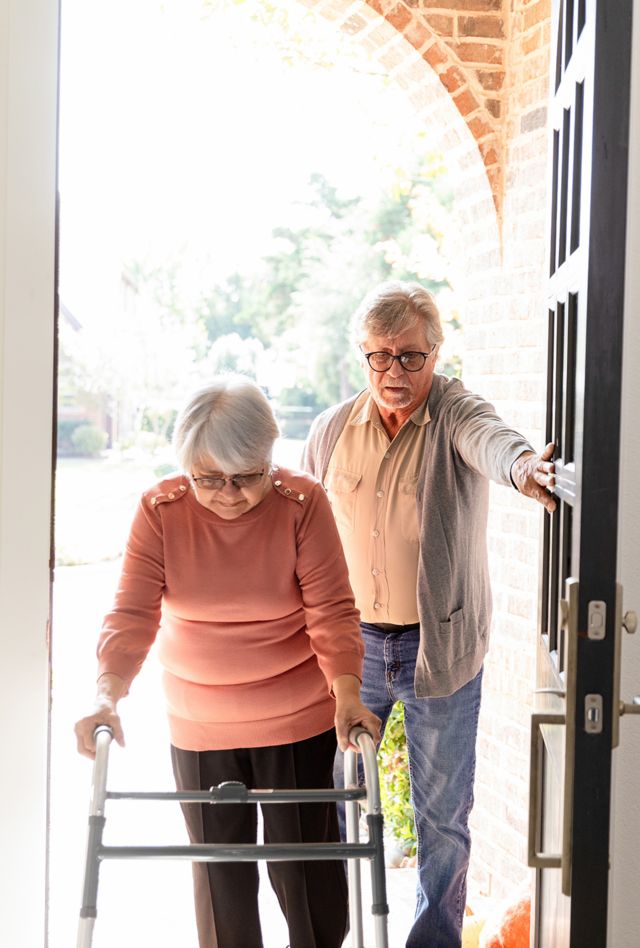Transitional Care Shows Promising Results

Author
Senior Research Scientist
August 2025
Transitional care can reduce readmissions, save money, and give patients more healthy days at home.
The Challenge of Care Transitions
The transition from hospital to home represents a vulnerable period in a patient’s health care journey. Each year, millions of Medicare beneficiaries face this critical juncture where inadequate care coordination can lead to preventable readmissions, medication errors, and negative health outcomes. What should be a bridge to recovery too often becomes a gap in care that undermines both patient well-being and health care sustainability.
Transitional care management (TCM) services can help. The Centers for Medicare & Medicaid Services (CMS) created billing codes for these services to improve care coordination while patients transition home after discharge from the hospital. To provide TCM services, health care professionals contact patients or their caregivers shortly after the patient is discharged from the hospital to check in and address their needs. Health care professionals also meet with patients within a couple of weeks after discharge and provide other care coordination services, such as medication reconciliation, self-management education, and support with accessing community resources. The overall goals of providing these services are to improve patient care and reduce hospital readmissions after patients are discharged from the hospital.
The Evidence Base for Transitional Care Management
My colleagues and I at NORC show the substantial impact transitional care services can have on quality and cost outcomes. In a study we published in Health Affairs, we examined over 1.6 million hospital discharges eligible for TCM and found that patients who received TCM services following discharge had 1.35 percent fewer readmissions, 0.61 more healthy days at home, and over $500 in reduced Medicare spending 31 to 60 days after discharge compared to patients who did not receive such services. These findings are consistent with the goals of TCM, including reducing potential harms and undesirable outcomes, such as a return to the hospital, during the post-discharge period.
Alternative Payment Models as Catalysts for Better Care Transitions
In addition to TCM, CMS has implemented population-based alternative payment models to promote value-based care. These models incentivize health care providers to focus on delivering patients high-quality, cost-effective care and may serve as catalysts for better care transitions. The models aim to improve care coordination across the care continuum, including the period when patients transition home from the hospital.
Our research showed that patients who were aligned with alternative payment models were more likely to receive TCM services after hospital discharge compared with patients who were not aligned with such models. This finding is corroborated by work we published in the Journal of Hospital Medicine. Using an even larger number of hospital discharges (over 11 million), we showed that 19.7 percent of patients aligned with an alternative payment model received TCM, whereas only 10.7 percent of patients not aligned with an alternative payment model received TCM. These findings suggest that TCM could be a particularly useful tool to promote care coordination for organizations participating in alternative payment models.
Importantly, our findings on the associations between TCM services and healthy days at home and total Medicare spending were even more pronounced when TCM services were delivered within the context of alternative payment models. Among the patients who received TCM services, those who were aligned with an alternative payment model experienced more healthy days at home and had lower spending compared with those who were not aligned with an alternative payment model. These findings indicate that alternative payment models create an environment that amplifies the benefits of TCM services.
The focus on value-based care and shared savings among participants of alternative payment models could help to improve efficiencies among health care providers and translate into greater cost savings for TCM. The infrastructure and incentives within these payment models—such as enhanced care coordination capabilities, flexibility in covering in-home visits, and shared accountability for outcomes—complement and augment the benefits of transitional care on quality outcomes and cost. Additional work is needed to identify the specific ways in which population-based alternative payment models enhance or complement TCM services.
Demographic Considerations
Our research also revealed differences in who receives TCM services. We found that patients from historically underserved groups, including Black or African American patients, received TCM less frequently compared with White patients. Further, among patients who were aligned with an alternative payment model, fewer patients from certain groups, including Black or African American and Hispanic communities, individuals with disabilities, and individuals dually eligible for Medicare and Medicaid, received TCM compared to those who did not receive TCM.
Given alternative payment models target whole-person care, working to ensure all traditional Medicare beneficiaries are in a care relationship with accountability for quality and total cost of care could help to improve access to important services for key subpopulations.
Implementation Challenges
There may be untapped potential for improving care coordination and outcomes among Medicare beneficiaries. Success requires not just identifying what works but understanding how to implement and scale effective strategies across diverse health care settings. We found that only 14.5 percent of eligible hospital discharges involved TCM. The relatively low use of TCM may be due to several challenges.
For example, previous research has shown that there are substantial upfront investments in infrastructure and staffing needed to implement TCM. Health care providers face administrative burdens associated with TCM delivery, including complex billing requirements and the need for new workflows to track eligible discharges. The current reimbursement structure for TCM, which allows only one health care professional to bill for TCM services per beneficiary, does not incentivize team-based care or reimburse non-physician team members involved in delivering comprehensive transitional care.
Reducing administrative burden related to delivering TCM could increase use of TCM. In addition, allowing groups of clinicians—rather than individuals—to receive reimbursement for delivering TCM services and expanding the TCM codes to allow more non-physicians to provide and receive payment for TCM could increase use and promote team-based care.
The Path Forward
Evidence from our research shows improved outcomes and cost savings for individuals who receive TCM services, particularly among those aligned with population-based alternative payment models. Our insights into the complementary effects between TCM and population-based alternative payment models lay a foundation for future policy and practice redesign. Practice leaders should consider both strategies—TCM services and participation in alternative payment models—together in care redesign initiatives. Policymakers can consider harmonizing across TCM and APM policy while working toward the goal of treating all traditional Medicare beneficiaries through accountable care relationships.
Suggested Citation
Hughes, M.L. (2025, August 14). Strategic Transitional Care Implementation Shows Promising Results for Patient Savings. [Web blog post]. NORC at the University of Chicago. Retrieved from www.norc.org.







